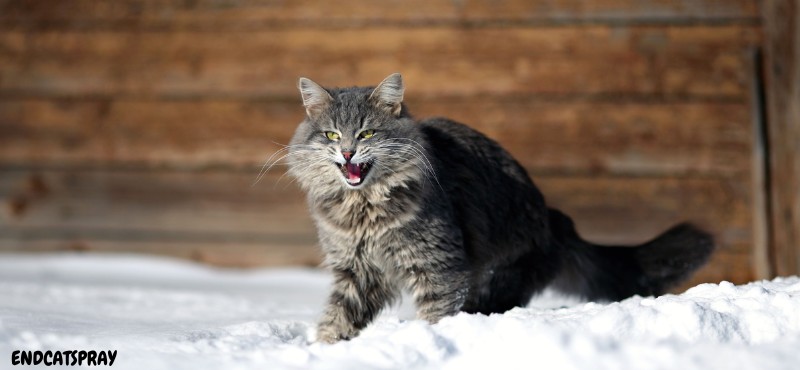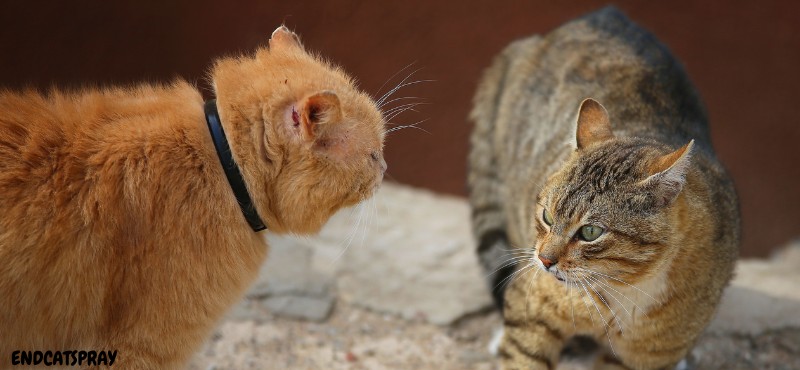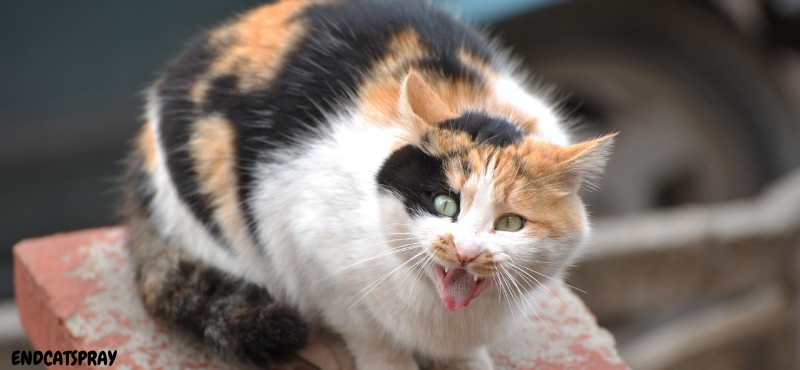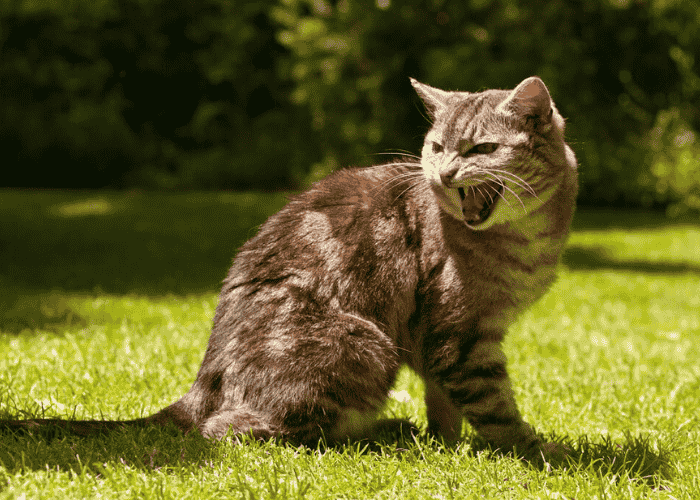Territorial aggression is a natural behavior in cats rooted in their instinct to guard their own space and resources. This aggression can manifest towards other cats, animals, or even people. It’s usually triggered by changes in their surroundings, like getting a new pet, sees stray animals outside, or moving to a new home. This article looks into different types of territorial aggression and provides practical solutions to keep both cats and their owners happy and peaceful.
- Territorial aggression in cats is a natural behavior that happens due to changes in their surroundings, like getting a new pet or person, seeing stray animals outside, or moving to a new home.
- There are different types of aggression in cats, such as territorial, fear-based, and pain-induced aggression.
- Spaying or neutering is the best way to stop territorial aggression in cats.
What is territorial aggression?
Territorial aggression in cats happens when a cat gets aggressive to guard its own space or things from what it sees as intruders. This aggression is driven by the cat’s natural instinct to defend its territory. Cats may exhibit territorial aggression toward other cats, animals, or even people.
This kind of aggression can start when there are changes in the cat’s environment. For example, getting a new pet or person, seeing stray animals outside, or moving to a new home can all trigger this behavior.
Types of Cat Aggression:

There are different types of aggression in cats, and understanding these can help explain why a cat behaves aggressively in certain situations.
Territorial Aggression:
Territorial aggression in cats happens when a cat feels it needs to protect its space from intruders. This often occurs when a new cat, pet, or person comes into the home. The cat might hiss, growl, swat, chase, or even attack to show dominance and set boundaries. This behavior is more common in homes with multiple cats or when the cat feels its resources, like food, litter boxes, or resting spots, are at risk.
Play Aggression:
Play aggression is common in young cats or cats that haven’t been properly socialized. During play, they might stalk, pounce, bite, or scratch, which looks like hunting behavior. This can also happen if cats are encouraged to play with hands or feet, making rough play a habit.
Fear-Based Aggression:
This can happen when a cat meets a new animal, person, or hears a strange noise. It can also occur if the cat is in a place where they had a bad experience before, causing the cat to react violently.
Pain-Induced Aggression:
This happens when a cat feels physically uncomfortable and reacts angrily to any touch or movement that makes their discomfort worse. Medical issues like arthritis, injuries, or dental problems can make a cat more likely to be aggressive. This behavior shows how important it is to check for health problems if a usually calm cat becomes aggressive.
Petting-Induced Aggression:
Petting-induced aggression occurs when a cat gets overstimulated during petting. The cat may appear to enjoy the petting at first but then suddenly bite or swat. Warning signs include tail flicking, flattened ears, or a tensed body. This type of aggression is often due to the cat’s sensitivity to touch or getting overly excited.
Status-induced aggression:
This can happen when a cat wants to show who’s in charge in the household. The cat might act this way towards other animals or even people in the home.
Maternal aggression:
Maternal aggression can happen in female cats who have recently given birth. They might react badly to anyone who comes near their kittens. This type of aggression usually decreases as the kittens grow and become independent.
Inter-cat aggression:
This usually happens when male cats are becoming socially mature, which is between 2 and 4 years old. They try to establish a social order. Hormones can play a part in this behavior, and it can also happen with female cats, though it’s less common.
Cat being territorial with new kitten?
Yes, cats can become territorial when a new kitten arrives. They naturally want to protect their space and resources. The new kitten might feel like a threat to their established territory. This can lead to hissing, growling, swatting, or even aggressive behavior towards the new kitten.
Do cats kill each other over territory?

Although it’s rare, cats can get so aggressive over territory that they might seriously injure or even kill each other. Usually, cats will show warning signs like hissing, growling, swatting, or chasing. However, if the conflict gets worse, especially between unneutered male cats or cats with strong territorial instincts, it can lead to physical fights.
These fights can sometimes cause serious injuries or even death, especially if one of the cats is much weaker or not ready for the encounter. Fights are more common in outdoor or feral cats, where territory disputes happen more often.
Ways to Stop Territorial Aggression in Cats:

Getting your cat spayed or neutered is a very effective way to stop territorial behavior. Every responsible cat owner should consider this surgery.
In homes with multiple cats, it’s important to create separate spaces for each cat. This includes separate feeding areas, litter boxes, and resting spots to reduce competition.
If a cat sprays in a particular area, it’s crucial to clean the spot thoroughly to remove any scent. If not cleaned properly, other cats might smell it and become aggressive, thinking there’s another cat around.
The last and most important way to stop territorial aggression in cats is to give them extra attention and love. From personal experience, I’ve learned that giving your cat attention and affection can work wonders. My cat used to spray urine excessively, but after giving her more love and attention, the problem decreased significantly. So, if you’re facing similar issues with your cat, try giving them extra attention and see the difference.
Conclusion:
Territorial aggression in cats can be tough, but it’s manageable with the right approach. By understanding the reason behind the aggression, cat owners can address the issue effectively. Spaying or neutering is an important first step, as it reduces hormonal triggers for territorial behavior. Most importantly, showing your cat love, patience, and attention can reassure them and reduce their need to act out.
Resources:










